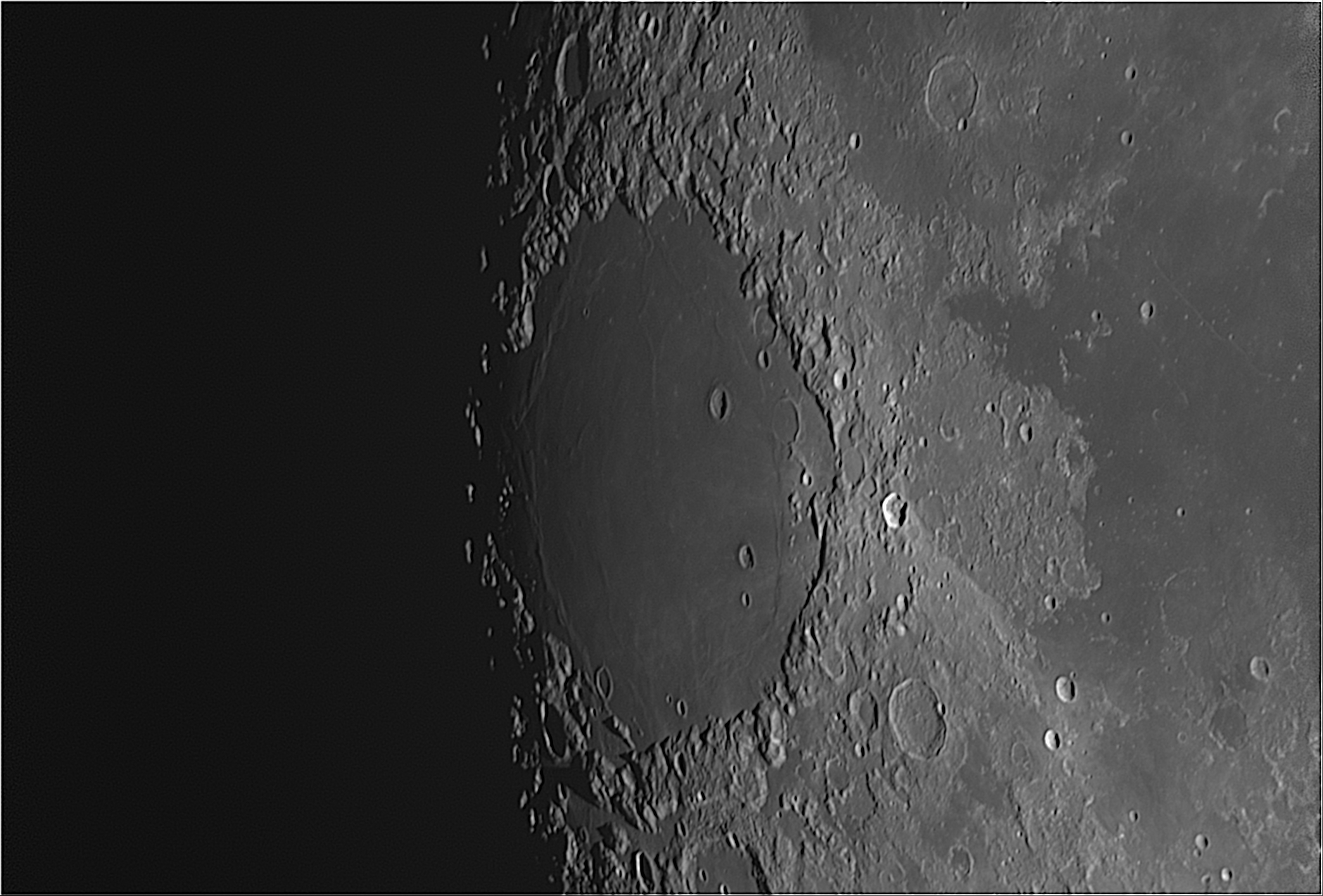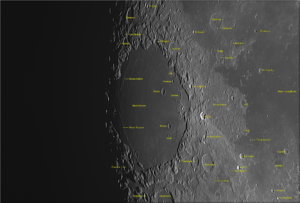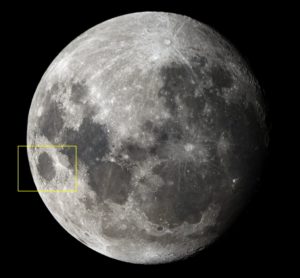The large smooth circular area is Mare Crisium (Sea of Crises). The 345 mile wide impact basin is located on the eastern side of the Moon just north of the equator. The impact that formed the basin is estimated to have occurred 4.5 to 3.8 billion years ago. The surface lies a little more than a mile below lunar ‘sea level’. Samples of the mare were retrieved by the Soviet Union’s Luna 24 lander and returned to the Earth in 1976.

The largest non-lava filled crater in the mare is Picard. No, not that Picard. It is named for Jean-Félix Picard, a 17th French astronomer, priest and geodesist. He pioneered the method for measuring the right ascension of a celestial object by measuring the time it crosses the observer’s meridian. His method became the accepted standard.
Two other craters, this time lava filled, are Lick and Yerkes. Both named after American philanthropists involved with 19th century astronomy.
James Lick provided funds for the construction of Lick Observatory, the first permanently staffed mountain top observatory in the world.
Charles T. Yerkes provided the funds for the construction of Yerkes Observatory and the 40″ achromatic refracting telescope housed there. The telescope remains the largest refractor telescope ever used for scientific research.

|

|
The source video for this image was taken on the morning of June 30 just as the Sun was setting on the eastern edge of the mare. The image is the best 20% of 1801 frames taken at an average of 15 frames per second. The frames were analyzed and stacked using AutoStakkert 2 and wavelet sharpened by RegiStax 6.0. All the lunar images are south at the top.